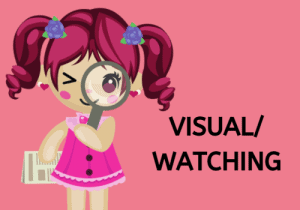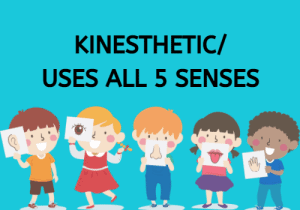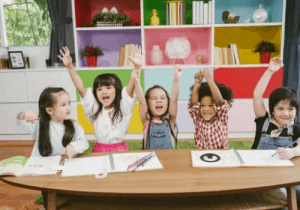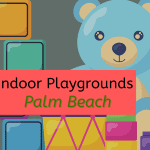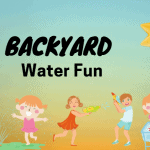
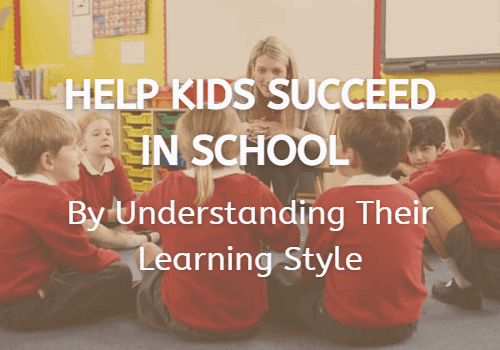
It’s the duty of any teacher or educator to ensure their students are having their learning needs met. But that’s only possible when teachers embrace all learning styles and find educational approaches that work for everyone in the class. We’ve all seen children lag behind in class, and that’s often caused by their teacher not understanding their learning style properly.
Being a great teacher means helping each student grasp the ideas and concepts that are being taught. And if that means adapting to different learning styles, that’s simply what has to be done. But what are these learning styles and how can you teach with them in mind? That’s what we’re going to find out today.
There are four main learning styles to consider: auditory learning, visual learning, reading and writing learning and kinesthetic learning. You can find out more about each of these learning styles and how to address them in the classroom below.
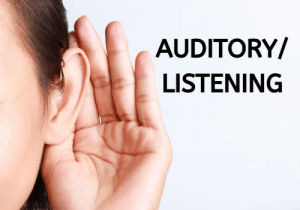
Auditory Learning
Auditory learners are best able to understand ideas when they’re able to sit back, relax and simply pay attention to them. They might not want to write down notes and things like that. But that doesn’t mean they’re not paying attention or learning. Instead, they’re likely absorbing the information that they’re hearing because they learn through vocal delivery.
Auditory learners also tend to be more vocal learners too. That means they might feel the need to ask questions and to gain a better grasp of concepts through dialogue that goes back and forth. That can be with the teacher or it could be in a group learning session in which they’re working alongside their classmates.
How to Recognize Auditory Learners
Spotting an auditory learner is relatively easy to do. You’ll notice that they switch off when they’re presented with a big block of text. Sure, we all do that sometimes. But it’ll be more pronounced and obvious with auditory learners. They’ll really struggle to engage with words and would much rather have concepts explained to them through words by the teacher.
If you ever notice a child struggling with words, that’s something to work on with them, of course. But it should also tell you that you should be looking at other ways to get information across to them. Talking to them one-on-one and making sure that you’re explaining ideas verbally is a good place to start.
Tips for Helping Kids That Are Auditory Learners
These are the kinds of kids you want to engage directly. Don’t hesitate to get them involved with the lessons through communication. Ask them questions and take the time to explain things to them one-on-one if you think they might be struggling to get their head around a particular idea. Let them be the ones asking the questions if others don’t want to; everyone will benefit from the answers you give.
You should also look to spark group discussions among the class. That way, they can speak and listen alongside their classmates and that’s something they should really benefit from. You might also want to incorporate music, videos or recordings into your lessons to engage auditory learners still further.
Activities That Work with This Learning Style
Giving auditory learners the chance to listen to stories rather than simply reading them is a good activity to use. You might also want to make recordings of your lessons for them to listen back to later. This is particularly useful when studies want a recap before an exam, for example. Using phonetics when spelling and studying language is a good idea as well, and memorization through recording and audio will enhance outcomes for them.
Visual Learning
Visual learners are the kids that tend to understand information and concepts better when they’re presented to them in a way that’s visual and graphic. It might be a graphic, a diagram of some sort or an infographic. There are many different ways of presenting information digitally, and these methods help visual learners understand information that otherwise may be quite complex and challenging.
These kinds of learners also tend to prefer seeing things as a whole. That means they benefit from being presented with an entire concept that’s presented visually. They’re less likely to want the information fed to them in small pieces. In that sense, visual learners are often more independent. You can present them with the information in a visual format and they can then absorb it independently.
How to Recognize Visual Learners
Visual learners will directly engage with the visual content you create more. So if you notice a child often seems like they’re not listening when you speak to the class but they do tend to come to life when there’s a graph to look at or a video to engage with, it might be because they’re a visual learner.
Visual learners can often be recognized through the work they create and complete in class too. There’s always a few kids who love to doodle and draw, and sometimes this can be a form of procrastination, but it can also be a way of giving a visual dimension to their work. Don’t just dismiss these things; pick up on them and see what it tells you about their learning style.
Tips for Helping Kids That Are Visual Learners
When working with kids who are visual learners, you should do your best to draw and explain with visuals. That doesn’t mean you have to become some sort of expert graphic designer. That’s not what kids care about. If they’re visual learners, they simply want to see a visual representation of whatever it is you’re trying to get across to them.
As well as creating diagrams and drawings for these kids to learn from, you should also give them the opportunity to draw too. They might be better at representing their own ideas through drawings and diagrams than they are through words. If you can find a way of making that kind of expression valid in your classroom, visual learners will start to really shine.
Activities That Work with This Learning Style
For visual learners, a lot depends on how you prepare your lessons and the materials you provide when trying to get your point across to the class. If you want to make sure visual learners feel involved and are able to understand what you’re saying, you should use photos, mind maps, flowcharts and diagrams of various kinds. It’s about combining the visuals with the vital information.
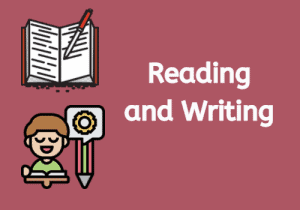
Learning Through Reading and Writing
These kinds of learners are the kids you’ll find with their nose in a book at all times. They have a fascination with and love for the written word. That doesn’t necessarily mean they’re more or less academically capable than their classmates. It simply means that they learn best when they’re able to read, and sometimes reread, ideas themselves individually.
Of course, these kinds of learners don’t only learn through reading books. They will also benefit from being given handouts in class and being able to read words that are included as part of a slideshow. They might also enjoy researching online and reading websites and articles as part of the learning process. And they often enjoy taking notes that they can read back later.
How to Recognize Reading/Writing Learners
Reading/writing learners tend to be labelled as independent, but that’s a mistake you should try to avoid making. It might appear that they’re always reading or searching for information online. But that might not be purely due to eagerness; they might simply find that learning through the written word is easiest for them.
They’ll also want to express their ideas in writing. This might mean that they come across as quiet because they’re not as willing as other kids to speak up and verbalize answers and questions. Instead, they’ll express themselves through writing and sometimes drawing as well. In that sense, there’s some overlap with visual learners.
Tips for Helping Kids That Learn Through Reading and Writing
The best way to engage reading/writing learners is by doing the traditional and conventional things that are expected in a classroom setting. The simple truth is these learners are easy to cater for because the way classroom learning has been setup for centuries already caters to their needs.
These are the kids that excel at reading and who enjoy writing essays. They don’t need to be adapted to much because the chances are you’re already asking them to do the things that they enjoy doing and that they benefit from when it comes to their learning style. If you want to do more, the best thing you can do is allow them the time and space they need to read and research.
Activities That Work with This Learning Style
If you have children in your class who you can see learn best through reading and writing, you can set them extra curricular activities that’ll enhance their learning and stimulate them. Providing additional reading material or encouraging them to make notes is a good idea. You might also want to provide them with handouts so they have something to take away with them and read after the lesson is over.
Kinesthetic Learning
Kinesthetic learners tend to enjoy using all of their senses in the process of learning. So instead of just listening the way auditory learners do, they like to touch, feel, see and smell too. It’s about engaging their senses to help them get a hands-on understanding of the concepts they’re learning about.
Because of everything we’ve just mentioned, it’s true that kinesthetic learners often struggle in traditional classroom settings. Sitting there staring at the teacher or watching a slideshow presentation often doesn’t cut it for them. Flashcards, memory games and hands-on experiments are all better suited to kinesthetic learners. Anything that helps them to engage directly is useful.
How to Recognize Kinesthetic Learners
If you notice that a child in your class is always looking to get involved directly in activities in situations, it might be because they’re a kinesthetic learner. They’ll want to touch and handle things, and they might also be more interested in drama classes and situations where they can act out aspects of the learning material.
That means they might enjoy reading things out loud for the rest of the class, and they’ll likely also excel when giving presentations. That performative aspect of the learning experience is something that’s very valuable and rewarding for kids who are kinesthetic learners. You might notice that they need more breaks when studying through reading or writing too.
Tips for Helping Kids That Are Kinesthetic Learners
Activity and movement are key when you’re looking to help kinesthetic learners. For example, many teachers find it useful to ask their class to act out certain scenes. They could be scenes from a book or play, or a scene that they created themselves based on a moment in history. These kinds of activities can make history classes a lot more fun too.
There are lots of other ways to incorporate interactivity and movement into lessons too. In science lessons, hands-on experiments and activities can be very rewarding, for example. Games of different kinds can also help kinesthetic learners. It’s often about spicing things up and moving away from traditional classroom learning strategies.
Activities That Work with This Learning Style
Designing graphics and different types of artwork can really help kinesthetic learners engage. Give them active things to do that aid their learning while keeping their attention. Using gestures to help memorize vocabulary can be helpful for young children. And encouraging them to take notes in a way that works for them, even if there’s not much writing involved, will be helpful as they get older.
Wrap-Up
Hopefully, the information above will have given you a better understanding of the various learning styles children might have. Of course, multimodal learners also exist; these are kids that have multiple learning styles. So keep that in mind when you’re assessing the needs of your kids in school.






